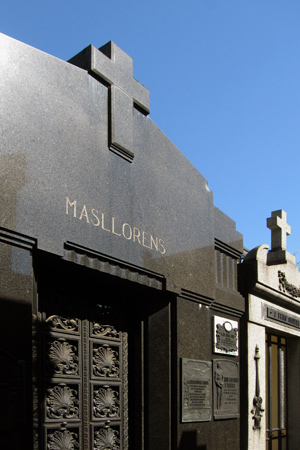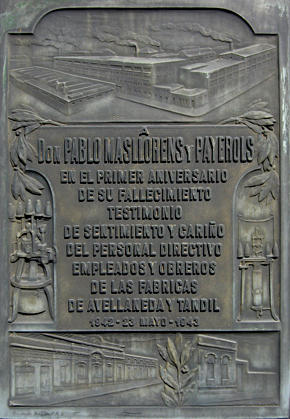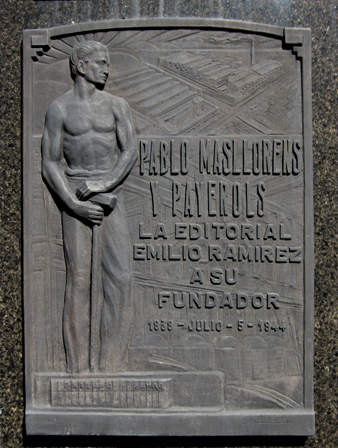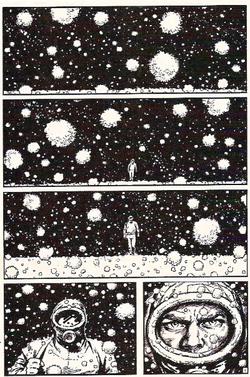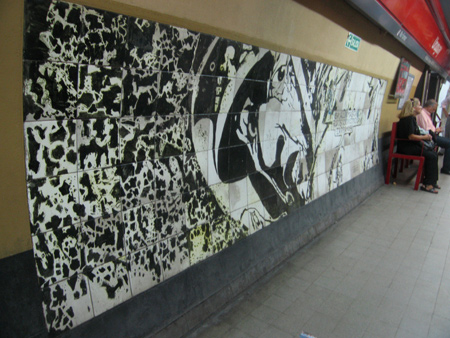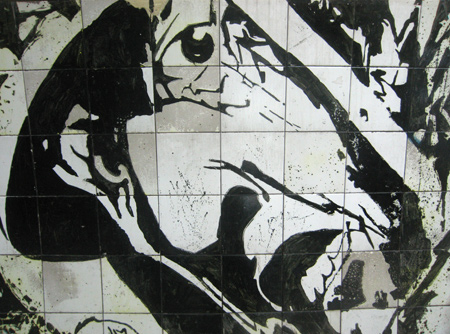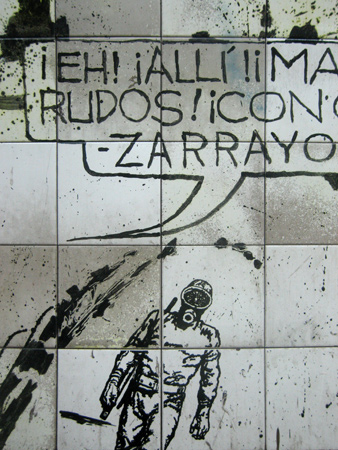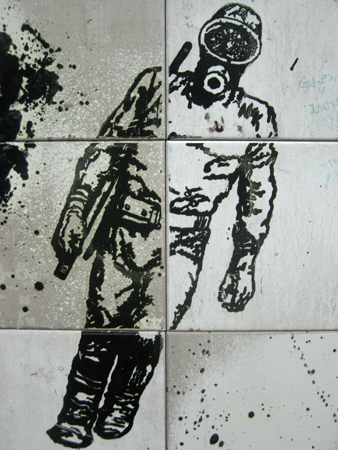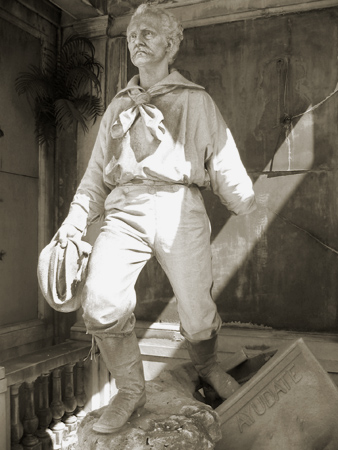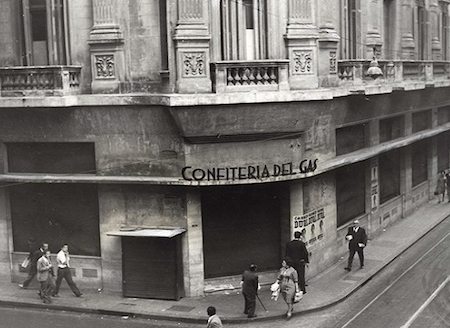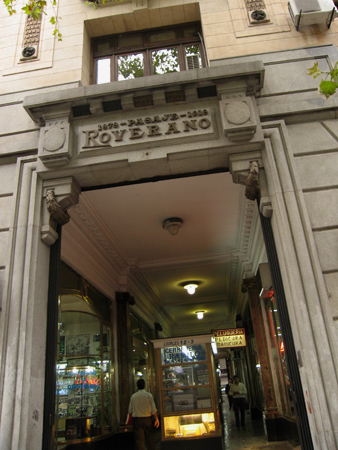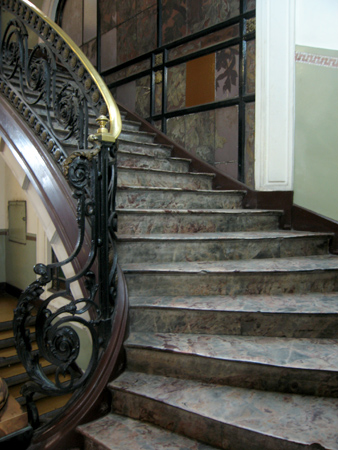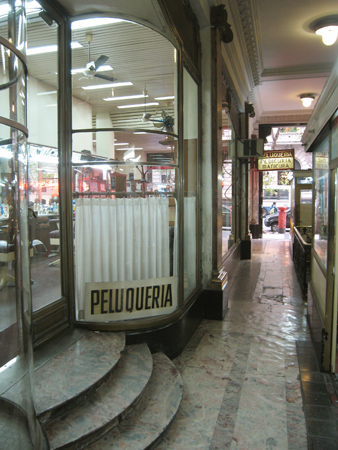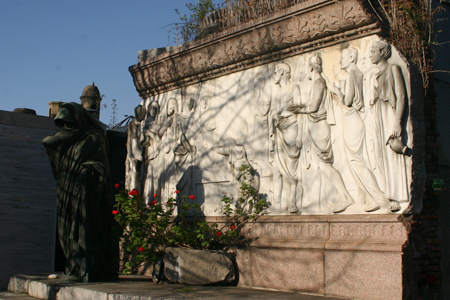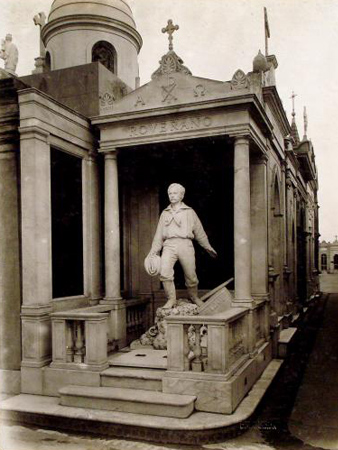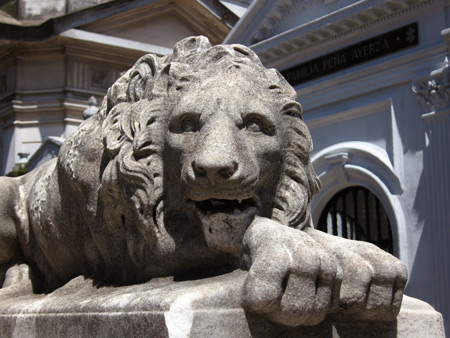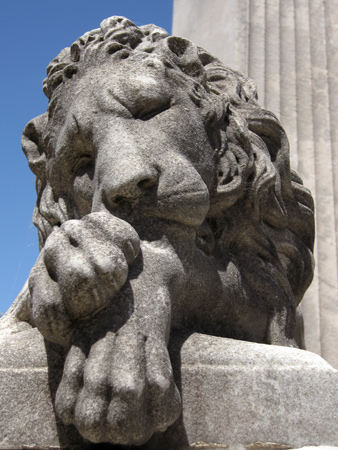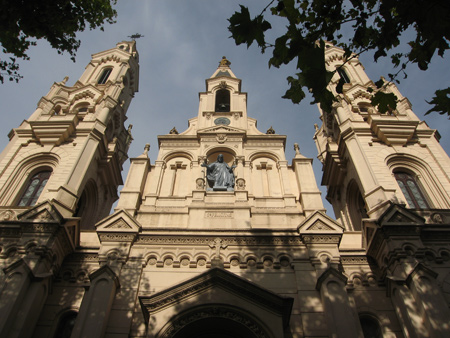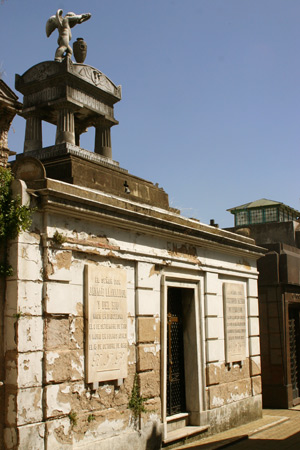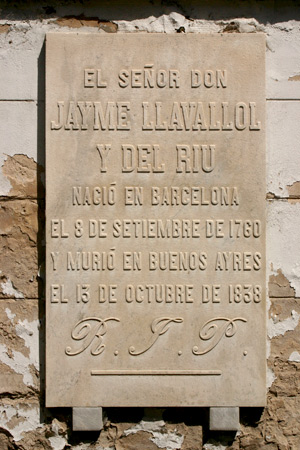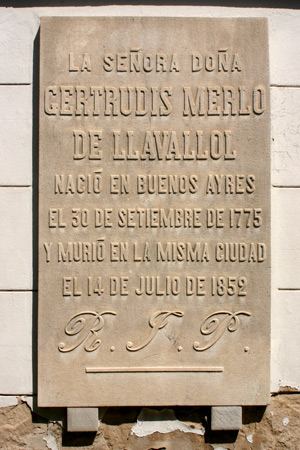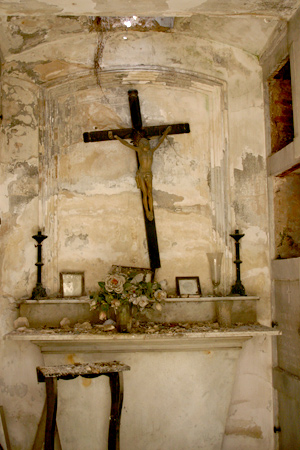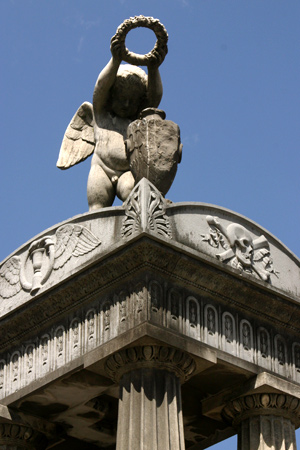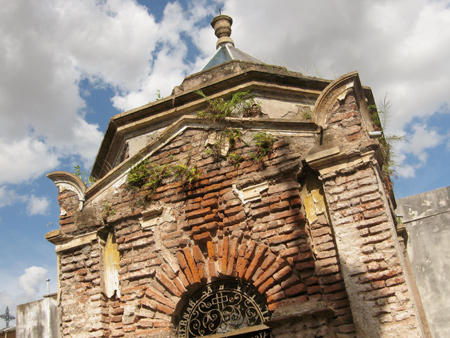
The most remarkable thing about this mausoleum—apart from its size & beautiful state of disrepair—isn’t easily noticed at first glance. Along the left side behind the iron gate is a single tombstone which fits neatly in the gap:
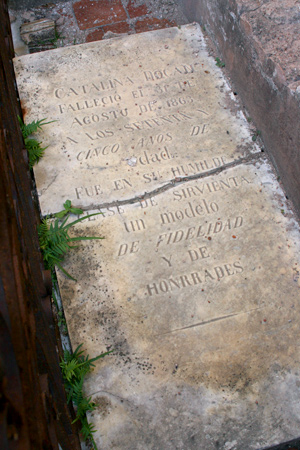
The inscription reads:
Catalina Dogan falleció el 31 de agosto de 1863 a los setenta y cinco años de edad. Fue en su humilde clase de sirvienta un modelo de fidelidad y de honrrades.
Catalina Dogan passed away the 31st of August, 1863 at the age of 75. She was, in her humble class of servant, a model of loyalty & honor.
That’s right. The maid was buried on the same plot as the family she worked for… but of course not inside.
Upper-class families that made their fortune either through agriculture or livestock had large estates to manage & required servants to raise children, maintain mansions & naturally to keep up appearances. Some servants became surrogate family members as in the case of Catalina Dogan. In spite of being exposed to the elements, this family obviously thought the world of her & bestowed a great honor by burying her here.
Update (Mar 2023): According to the former director of the cemetery, the tombstone has been temporarily removed for restoration. No estimate on its return date.
4 Comments